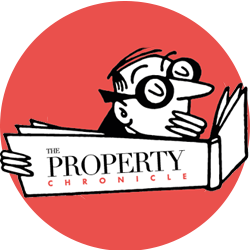Congratulations―you’ve successfully beaten the odds and survived to ’25!
Many have shared their two cents on how capital is set to flood into the real estate sector after a period of all too familiar economic turbulence. Now – I don’t entirely share that view; I expect a muted rebound, less a full-blown recovery. Debt may be less expensive, and lenders might be beginning to lend again. But that’s only half the story.
Yes – investors are approaching the table with more chips than last year, but they are still unsure of where to place them. As those with refreshed confidence and renewed reserves roll the proverbial dice, the elephant at this roulette table remains obsolescence and the ongoing choice between the “green premium” and “brown discount”.
Busted flush
Finding value in either “green” or “brown” assets is tricky. As aforementioned, the economic situation has coalesced with evolving consumer habits. This has affected what individuals expect from a variety of asset classes, and therefore, their perceived value (£). Working from home and shopping online are the two big ones, but there are plenty more.
So, what are “green” and “brown” assets? Well, green is the colour of money. Coincidentally perhaps in this context. In commercial real estate, “green” assets refer to properties designed and operated with a focus on sustainability and environmental responsibility. These buildings often feature energy-efficient systems, sustainable materials, and eco-friendly designs that reduce their carbon footprint and operating costs. Examples include buildings with certifications like BREEAM.
The “green premium” refers to the higher value or rental income that green-certified buildings can command compared to traditional buildings. This premium arises because green buildings often have lower operating costs, higher occupancy rates, and greater appeal to tenants and investors who prioritize sustainability. Higher rents and sales prices are where the premium part comes from.
‘Brown’ assets, often available at a discounted rate, are older, frequently underperforming properties that make up a significant portion of the real estate market. These buildings are typically energy inefficient, lacking modern amenities and increasingly unable to satisfy tenant demands or adhere to stricter environmental regulations. It’s no wonder they’ve been eclipsed by new, green developments that captivate investors and policymakers.
Ace in the hole
Investment into the UK office market best typifies this polarisation. EG analysis shows a dramatic shift in where capital has been deployed – investment in EPC-rated D-G buildings fell from 65% in 2015 to 35% in 2024, while A-C investments rose from 35% to 65%.
The direction of travel is clear. Investors want best in class stock – it’s future-proofed, provides safe returns and there isn’t a lot of it about, that’s why prices have rocketed. But if that is true, we’re going to run out, quickly, right?
For me, this is where the conversation must shift. We pay significant attention to the headline-grabbing, trophy developments – those glass-and-steel monoliths to sustainability and innovation that dominate skylines. But what about the rest? Brown assets need love too: the forgotten, aging stock that may have lost its sparkle but still has potential. Our sector is now defined by ESG criteria, but we now need to make the case that investing in brown assets isn’t just good economics – it’s essential for sustainable growth.
However, this presents a paradox: while green assets are undeniably crucial, brown assets offer a tremendous opportunity for substantial, measurable impact. Retrofitting and repurposing existing buildings can significantly cut carbon emissions compared to constructing new ones. The WGBC reports that nearly 40% of global carbon emissions originate from the built environment, with a large portion due to the energy consumed during construction. Revitalizing existing structures is not only more sustainable but also a practical necessity if we are committed to achieving global climate targets.
Moreover, tackling brown assets is critical in the fight against obsolescence. Obsolescence isn’t just a nuisance – it’s an unfolding financial and environmental crisis. Buildings that fail to meet modern energy standards risk becoming stranded assets, their value plummeting as they become functionally irrelevant. Upgrading brown assets doesn’t just preserve their utility; it safeguards the value of portfolios and ensures that vital urban infrastructure remains productive. All stakeholders across the built world should be committed to ESG targets; what better way to prove your credentials that actively working to negate obsolescence through repurposing and retrofitting.
All in?
So, where do we go from here? For investors and operators, the challenge is to strike a balance between green and brown, between the aspirational and the practical. This doesn’t mean abandoning trophy projects – they have their place. But it does mean embracing the hard, often unglamorous, and expensive work, of upgrading existing stock. Yes, not all buildings can be saved, some are just too obsolete by structural integrity and design. The recalibration and regeneration of assets, and how they fit into a future proofed world, means that buildings from scratch in some cases is inevitable.
But – the future of commercial real estate isn’t a binary choice between green and brown. It’s a spectrum, a balancing act that requires creativity, collaboration, and a commitment to long-term thinking. As we look ahead, perhaps the question isn’t whether we should stick or twist on green or brown. It’s how we can do both and do it well.
By tackling obsolescence head-on and reimagining the potential of brown assets, we can create places and spaces that are not only economically resilient but also socially and environmentally transformative. We survived ’25, so is it a quick fix in ‘26? Or will ’27 be a yield man’s heaven, ahead of a discounted rate in ‘28? Everything will be fine in ’29 no doubt…
The cards are in our hands; it’s time we play them right.




